5 Historic Washington, DC, Marches to Know About
The Women's March on Washington is expected to draw hundreds of thousands.
— -- The day after Donald Trump takes the presidential oath of office on the steps of the U.S. Capitol, hundreds of thousands of protesters are expected to gather on the National Mall for the Women's March on Washington.
The march, launched by a Facebook post from a 60-year-old grandmother in Hawaii after Trump defeated Hillary Clinton last November, is expected to draw crowds of more than 200,000 and feature celebrities including Cher, Amy Schumer, Julianne Moore and Katy Perry. In addition, more than 270 "sister marches" are scheduled to happen simultaneously, in all 50 states and across 33 countries.
Though the march has "women" in its title, its organizers say it is open to anyone who will march in support of inclusion for all and causes ranging from climate change to immigration, LGBTQ rights and more.
"One of our goals for this march is to display what it looks like when the progressive movements are working together," Linda Sarsour, one of the co-chairs of the organization, told ABC News.
As Washington, D.C., prepares for a protest that could rival or exceed the size of crowds on Inauguration Day, here is a look back at five memorable marches in the nation's capital.
March on Washington for Jobs and Freedom: Aug. 28, 1963
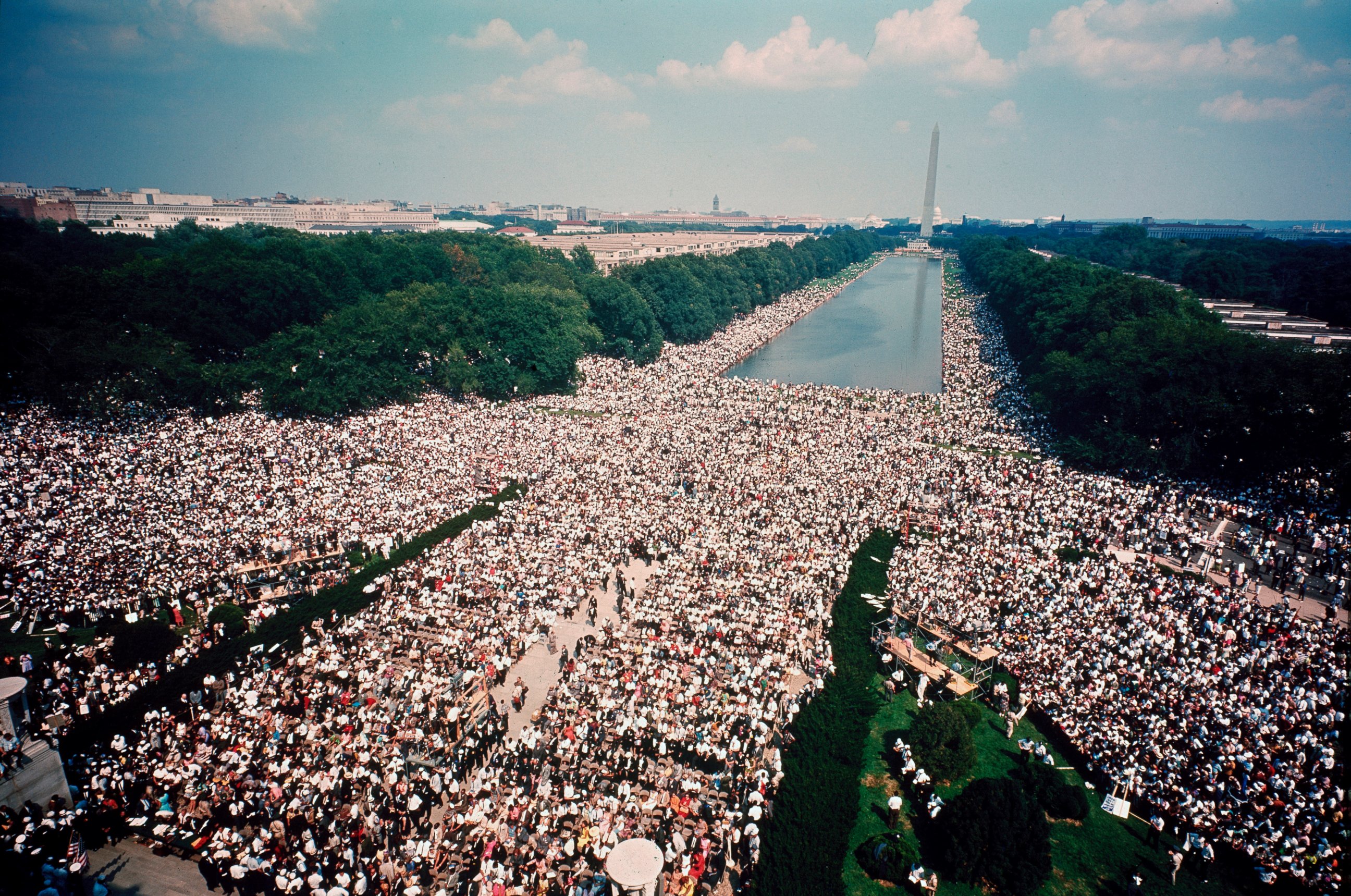
It was at this monumental gathering that Martin Luther King Jr. delivered his famous “I Have a Dream” speech on the steps of the Lincoln Memorial in Washington, D.C.
An estimated 250,000 people from around the country attended the march, according to the National Park Service. The peaceful march saw strangers of all races and from all backgrounds lock arms, sing and walk together in support of the Civil Rights Act that then-President John F. Kennedy was trying to push through Congress.
Vietnam War Protests, October 1967
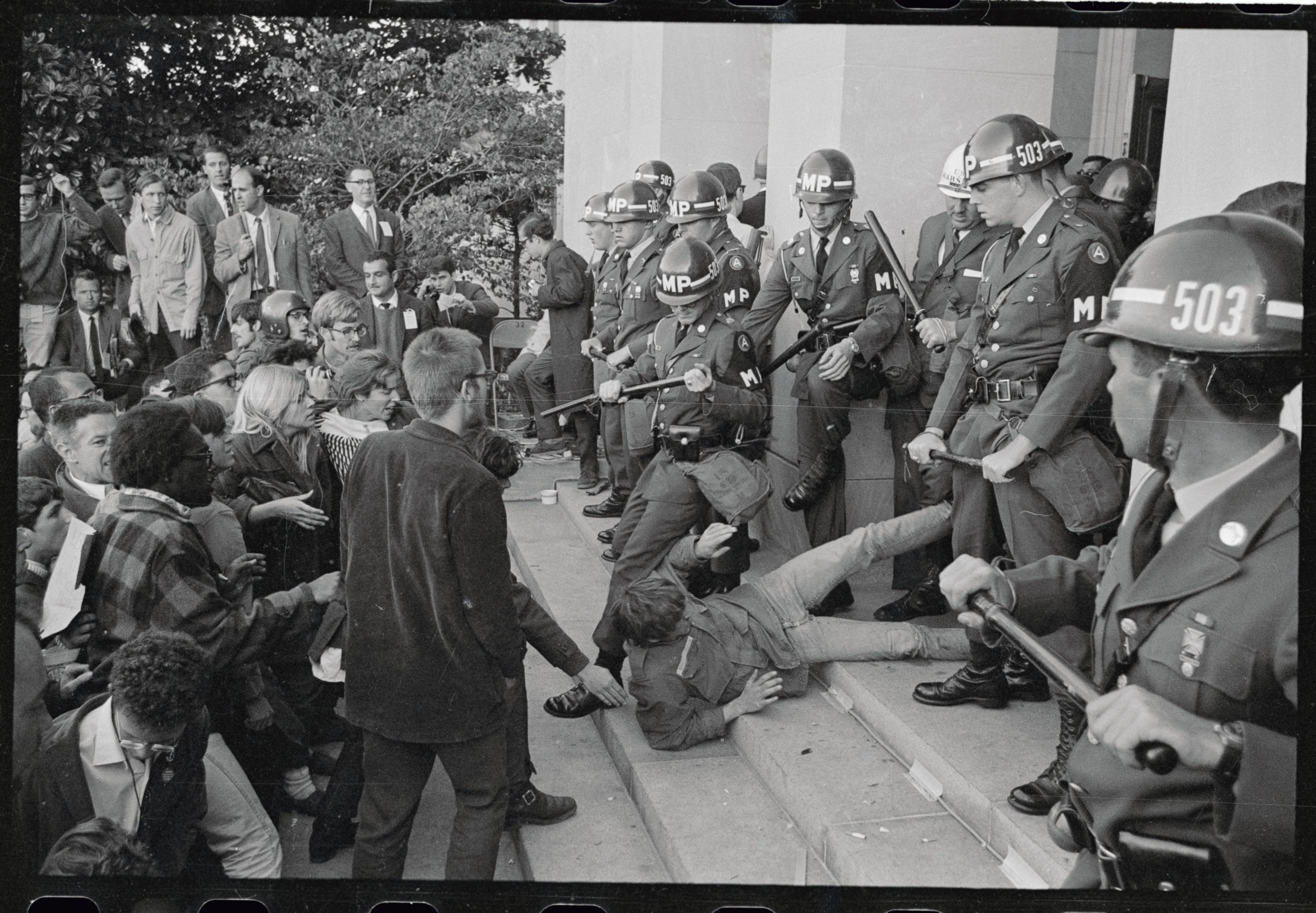
A crowd estimated at 50,000 to 100,000 people arrived in Washington on Oct. 20, 1967 to protest the Vietnam War during the administration of Lyndon B. Johnson. Photos posted by the LBJ Presidential Library show protestors gathering the next morning near the Lincoln Memorial and the Reflecting Pool on the National Mall.
Some of the protesters continued their march on Oct. 21, 1967, to the Pentagon, where they were met with resistance from U.S. Deputy Marshals. "As soon as they were arrested, many of the demonstrators simply collapsed, forcing the Deputies to drag them to the waiting prison vans where other Deputies pushed and shoved the recalcitrant demonstrators aboard," reads an account of the protest on the U.S. Marshals website.
The protest at the Pentagon lasted through the night and led to nearly 700 arrests, according to the U.S. Marshals.
The October 1967 protests at the Mall and the Pentagon were "the most dramatic sign of waning U.S. support for President Lyndon Johnson’s war in Vietnam," according to History.com.
March on Washington for Lesbian and Gay Rights : Oct. 11, 1987
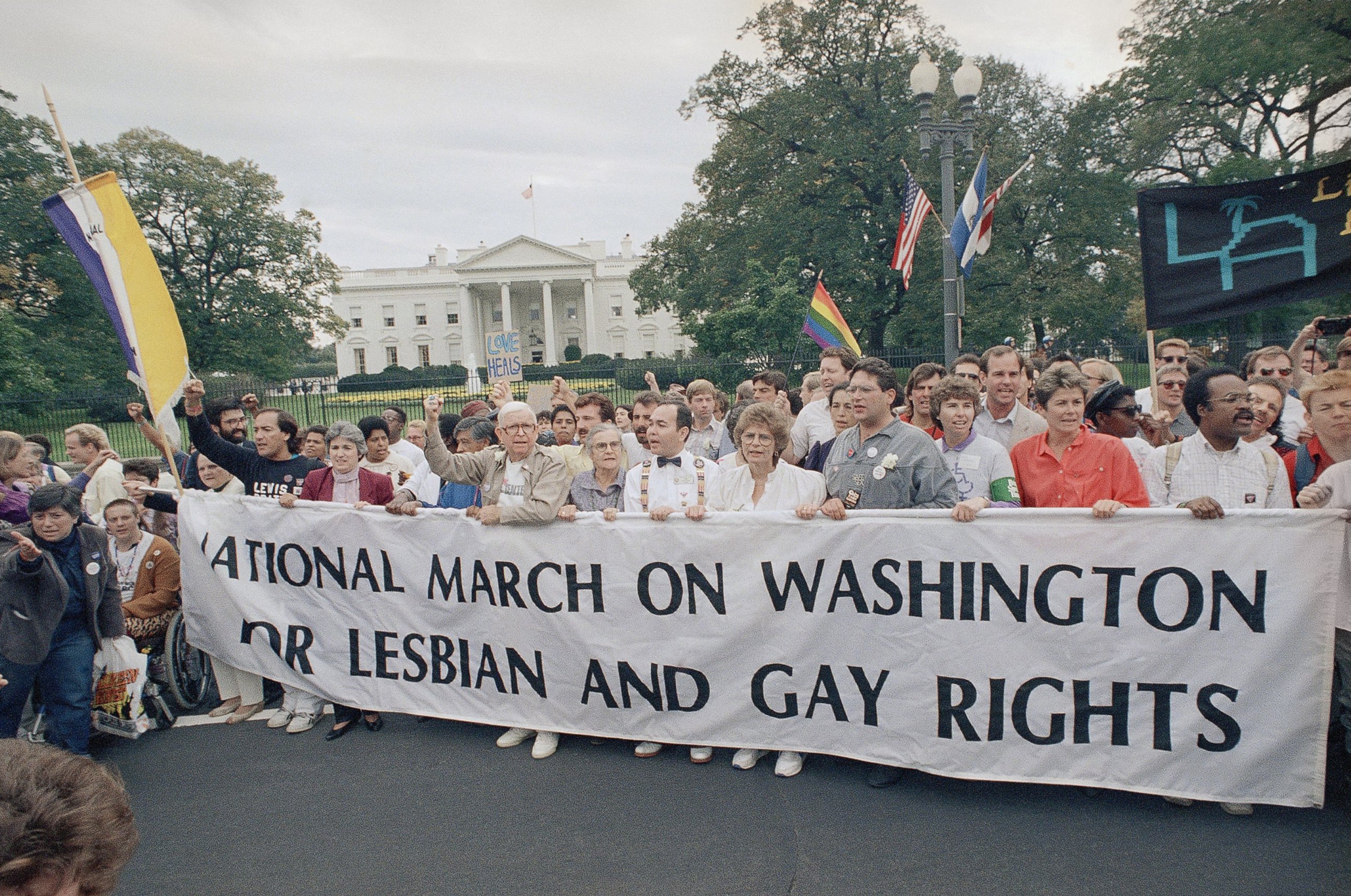
Hundreds of thousands of people marched in Washington, D.C., in the height of the AIDS crisis in 1987 to protest discrimination against homosexuals and demand more federal money for AIDS research.
The U.S. Park Police estimated the march's crowd at 200,000 while organizations claimed 300,000 participants and said it was the largest gay rights march in history, according to a New York Times report at the time.
Momentum from the march led to the founding of more LGBTQ organizations and the designation of Oct. 11 as “National Coming Out Day,” according to the Human Rights Campaign.
The march also marked the first time the AIDS Memorial Quilt, comprised of memorial panels for the victims of AIDS, was displayed on the National Mall. 500,000 people visited the Quilt over the course of the weekend the march was held, according to The NAMES Project Foundation, which curates the Quilt.
Million Man March: October 16, 1995
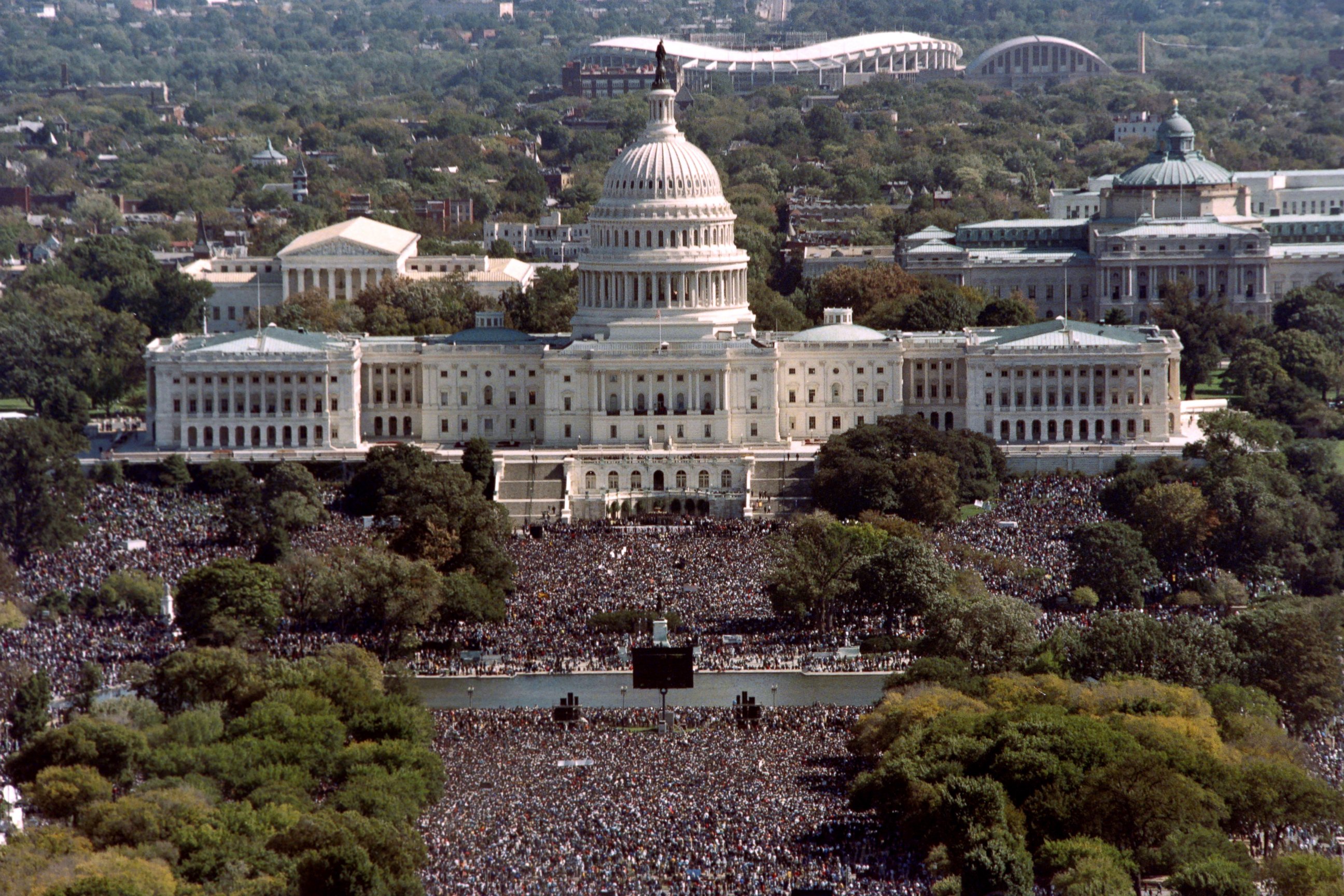
The Million Man March, held more than 20 years ago, was the brainchild of Louis Farrakhan, the controversial leader of the Nation of Islam. Farrakhan and other speakers promoted African-American unity and encouraged responsibility among African-American men to the grandfathers, fathers and sons who gathered on the National Mall.
The exact size of the march became a source of controversy when the National Park Service estimated the crowd’s size at 400,000, according to The Associated Press. That estimate fell well below the 1 million attendees claimed by the march’s organizers.
Iraq War Protest: October 26, 2002
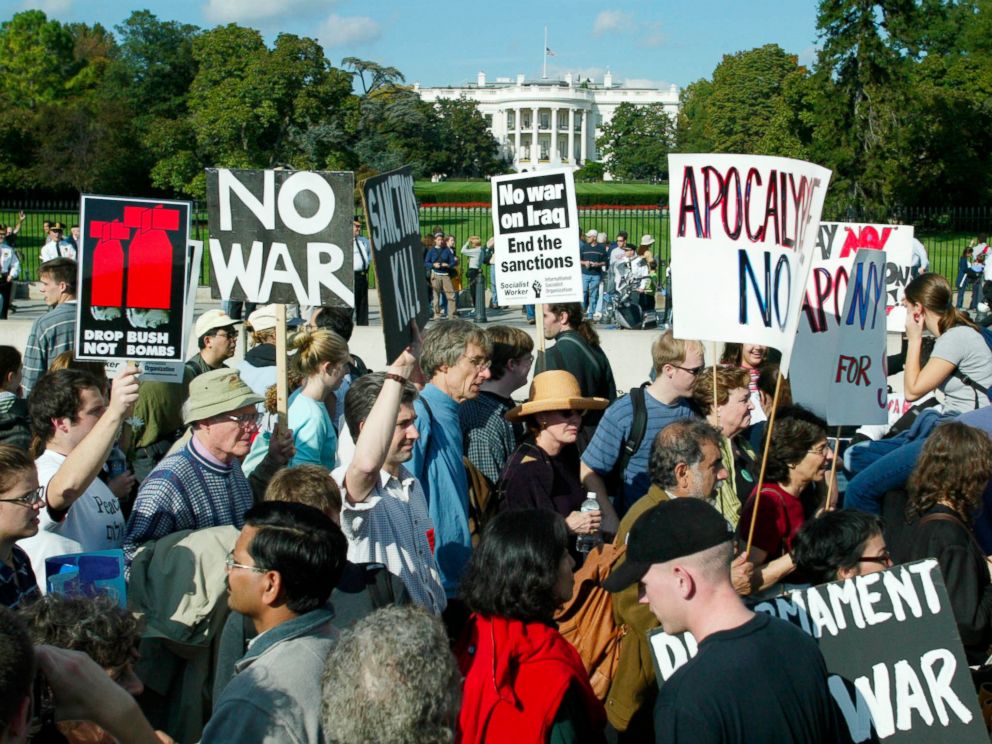
A crowd estimated to be greater than 100,000 gathered just one month after the one-year anniversary of the Sept. 11, 2001, attacks to protest George W. Bush administration’s plans for war against Iraq.
“People arrived in Washington by the thousands in buses, vans and cars packed with students, parents, families, and senior citizens,” reads a UPI report of the crowd that day. “There were Muslim women wearing headscarfs, Catholic priests carrying placards, and children with peace signs on their T-shirts. And the numbers were as large, if not larger, than the organizers predicted.”
MoveOn.org was one of the organizers of the protest, which saw speeches from figures ranging from Rev. Jesse Jackson and Al Sharpton to actress Susan Sarandon and Ben & Jerry’s Ice Cream owner Ben Cohen, according to UPI.




